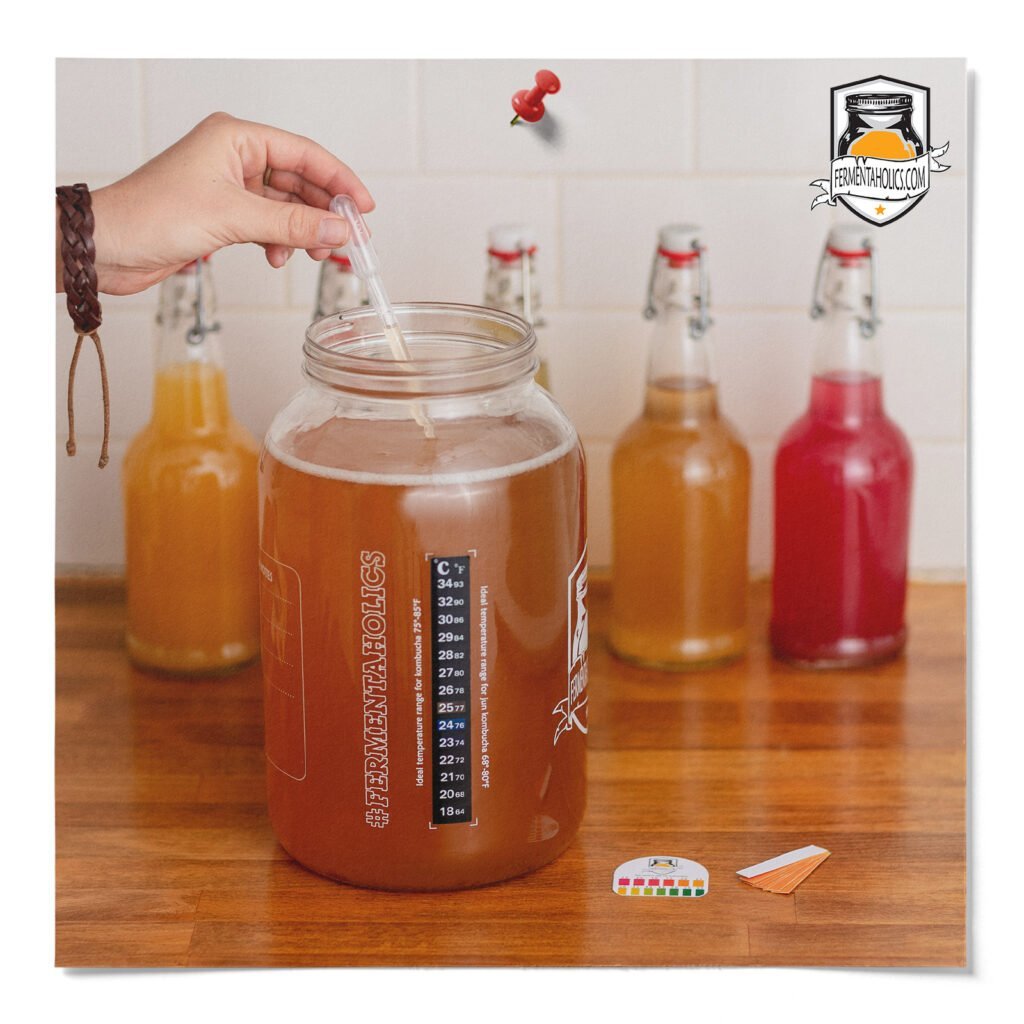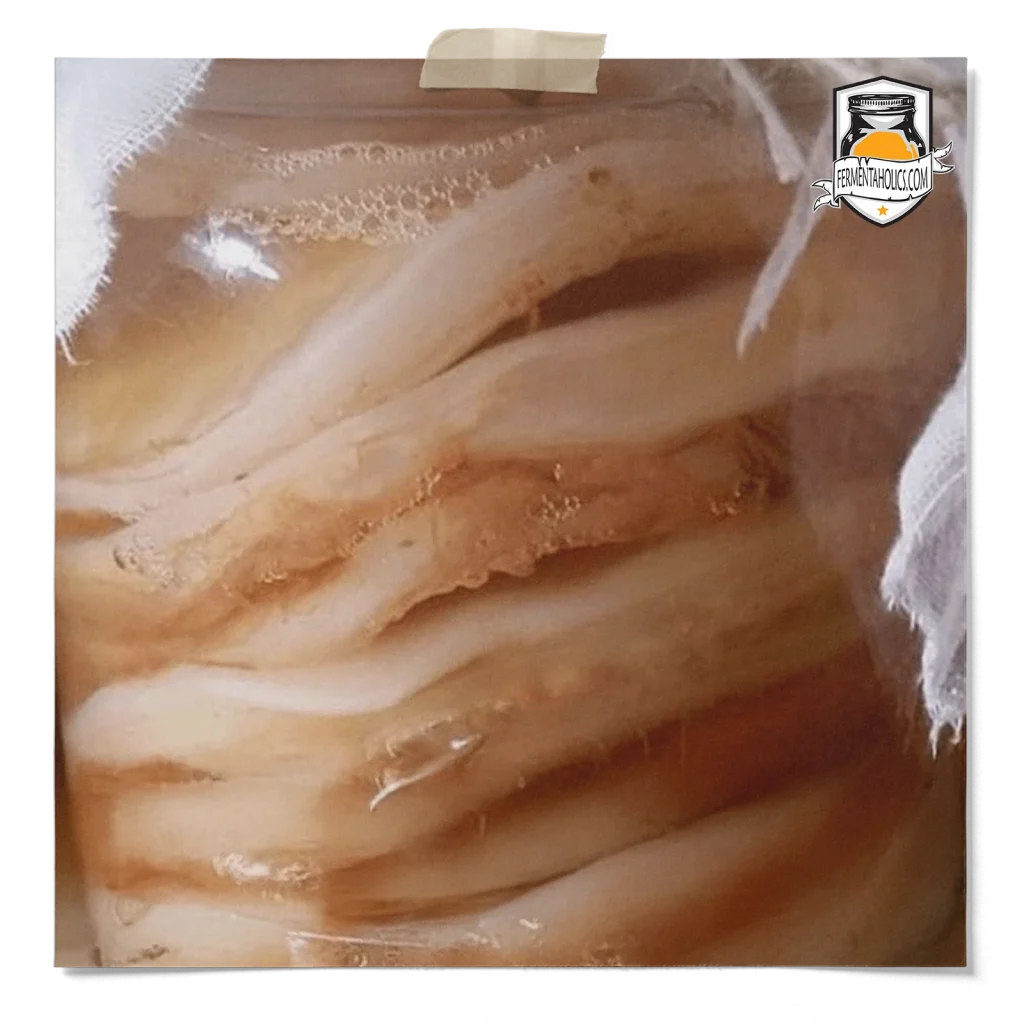
A question that may come up in your brewing journey is: “Do I ever need to replace my SCOBY? If so, when?” This question operates under the assumption that we’re referring to just the pellicle (rubbery surface growth) as the SCOBY. If you’re wondering what’s the difference between the pellicle and the SCOBY, take a look at our post here – What is a SCOBY. The SCOBY is more than just the pellicle, which I’ll go more in detail about later, but I wanted to clarify that this question is derived from confusion on the definition of a SCOBY. The direct answer is that you never need to replace your SCOBY if well taken care of, but when it comes to the pellicles (or “mothers” as they are so lovingly referred to), those can be thinned out with each brew.
Mentally: SCOBY is an obscure term and has, over time, ubiquitously come to refer to the rubbery, pancake-looking surface growth that occurs on your kombucha brew. This is somewhat of a misrepresentation because the acronym SCOBY stands for Symbiotic Culture Of Bacteria & Yeast, referring to the living microbial population residing in the kombucha. The pellicle is made up of cellulose, synthesized by the bacteria during fermentation, i.e., not bacteria or yeast, and not alive.
There are definitely microbes living in and around the cellulose structure, but the pellicle is more like their little house (quite the mansion, actually). It is hard to think of yeast and bacteria on their own without some sort of substrate, which is why I suspect the pellicle has become so esteemed in the kombucha brewing world. It’s a bit more accurate to think of the starter tea itself as the SCOBY, though I suppose the same argument could be used against that statement as well. The point of me explaining this is to separate the idea of the cellulose mat being the conductor of fermentation. When it is merely a by-product of the fermentation, which occurs regardless of if there were any previous introduction of the substance.
Physically: Like I was saying, the fermentation of kombucha produces a cellulose mat that gets synthesized on the surface of the tea. This mat will get thicker with time if sat undisturbed. If disturbed, a layer of liquid can get on top, and a new laayer will begin to form on the surface again. Each new brew causes surface disturbance, and thus new layers will likely form with each brew. Eventually, your brewing vessel can become overrun with pellicles, and you will be asking yourself what the heck to do with all these pellicles! As far as the kombucha itself is concerned, you can toss the pellicles with each brew. That’s not to say that the pellicle is useless, however, because microbial cellulose is a remarkable material that can be fashioned into all kinds of crazy things (fruit leathers, dog treats, jewelry, clothing, etc.!).

Often people will create a SCOBY hotel and allow previously grown pellicles to preserve in kombucha, being kept for backup use in case something goes awry with their main brew. While we have talked about how adding a pellicle isn’t required for the fermentation to take place, it is certainly not hurting anything and only adds extra microbes that are living on the surface of the pellicle. So while creating a SCOBY hotel might not be necessary (an alternative would be just to have a spare jar of starter tea), there is some viability to the practice and allows a “waiting room” for the pellicles when you don’t really know what to do with them.
So in a SCOBY hotel, can the pellicles go bad? As long as there is enough liquid to keep the pellicles covered, they will preserve for years in my experience. The more common problem here is allowing the liquid to evaporate, or going too long without checking on it which allows the top pellicle to dry out and will inevitably mold.
Here I’m referring to the SCOBY in its entirety, as in, when do you need to start over completely? You will only need to replace your SCOBY if it has developed mold or if it is continuously struggling to ferment. Often with struggling SCOBYs, things can be done to help bring balance to your culture depending on the situation, and you won’t need to start over completely. If you aren’t getting good results, a quicker fix sometimes is to start fresh with a new, strong culture so you can enjoy your homebrewed kombucha again.
